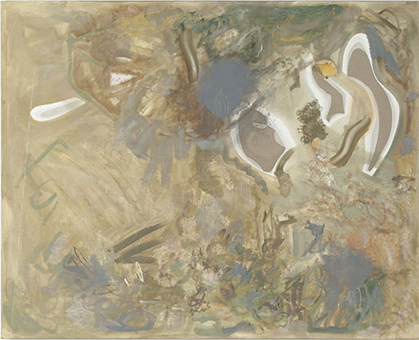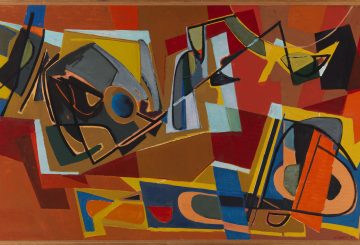From Stella Rosa McDonald…
In his 2013 solo exhibition Mascara Memories, John Spiteri’s gestural paintings emerged from between raw wooden shelving and glass ledges and were punctuated by elements of sculpture and collage that worked to disturb the integrity of the picture plane. In the show Paint a rumour 2009, paintings rested on splintered wood while some of the more delicate works, made on both glass and canvas, lay tenuously on rocks. These sculptural and painterly installations, as considerate as they were of time and space, conveyed the sense that the artist was desperate to escape the frame.
In Faceless Men, Spiteri has forgone sculptural intervention to explore the strata of the canvas itself and in doing so he seems to have finally broken free. The surfaces in works such as Despicable Child reveal subtly composed layers of scratching, rubbing, drawing and erasure made with an earthy palette that includes tones of khaki, puce and maroon. The paintings in Faceless Men disclose a series of techniques that, in the tradition of Modernism, draw attention to the process of painting itself. There is a disarming sense of self-consciousness to all the elements of Spiteri’s work; the muddied palette and glimpses of raw linen recall the artist’s raw materials, while the enigmatic titles betray comic and insistent self-examination. If a type of sculptural grammar supported Spiteri’s previous exhibitions, then the works in Faceless Men should be considered the lexicon paintings, a fantastic catalog of the subtle phrases and definitions by which Spiteri arranges his world.
Until August 2
Sarah Cottier Gallery, Paddington
Pic: John Spiteri, Despicable Child, 2014, acrylic, enamel and pencil on linen, 122 x 152.5cm. Courtesy of the artist and Sarah Cottier Gallery, Sydney.


